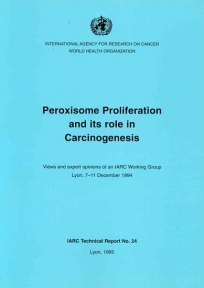
978-92-832-1439-7
978-92-832-1439-7
A state-of-the-art consensus report on what is known about peroxisome proliferation, the mechanisms involved, and their relevance to carcinogenesis. Peroxisomes are single, membrane-limited, cytoplasmic organelles that are found in cells of animals, plants, fungi, and protozoa. Peroxisome proliferators include certain hypolipidaemic drugs, phthalate ester plasticizers, industrial solvents, herbicides, food flavours, leukotriene D4 antagonists, and hormones. Numerous studies in rats and mice have demonstrated the hepatocarcinogenic effects of peroxisome proliferators, and these compounds have been unequivocally established as carcinogens. Since humans are exposed to peroxisome proliferators to a significant extent, assessment of the adverse biological effects of this group of compounds, and particularly their potential carcinogenicity, has become an important issue. The report has two parts. The first records the consensus reached by a group of eleven experts, including several of the leading investigators in this field. Questions addressed include the mechanisms by which peroxisome proliferators exert their carcinogenic effects in rodents, the relevance of animal studies to the evaluation of carcinogenic risk in humans, and the potential use of peroxisome proliferation as a biological marker for liver cancer. The report concludes that compounds inducing peroxisome proliferation in rats and mice have little, if any, effect on human liver. The report also issues advice on the interpretation of peroxisome proliferation, demonstrated in animal studies, when evaluating the carcinogenic risk to humans. The second part consists of three background papers presented by members of the working group.